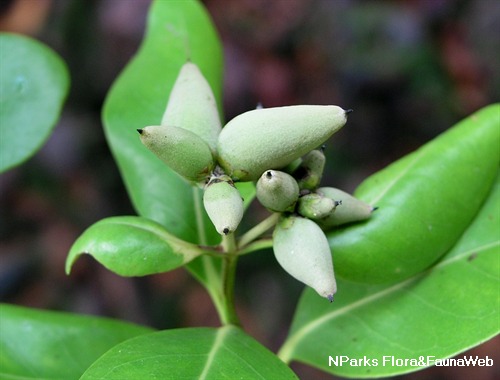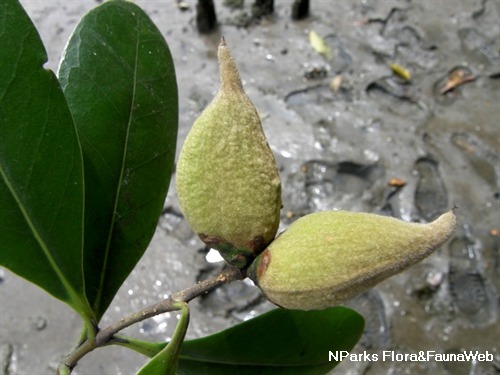
Back
Avicennia officinalis L.
| Family Name: | Acanthaceae |
| Synonyms: | Avicennia tomentosa Willd. |
| Common Name: | Api Api Ludat |
Avicennia officinalis, also known as Api Api Ludat, is a mangrove tree. It has large orange-yellow flowers that smell rancid. The leaves are oblong shaped and the underside are distinctly yellowish green.
Name
Classifications and Characteristics
| Plant Division | Angiosperms (Flowering Seed Plants) |
|---|---|
| Plant Growth Form | Tree (Medium (16m-30m), Small (6m-15m)) |
| Lifespan (in Singapore) | Perennial |
| Mode of Nutrition | Autotrophic |
Biogeography
| Native Distribution | East Pakistan, Sri Lanka, Bangladesh, India, Southeast Asia, including Singapore, New Guinea, southern Australia |
|---|---|
| Native Habitat | Shoreline (Mangrove Forest) |
| Preferred Climate Zone | Tropical, Sub-Tropical / Monsoonal |
| Local Conservation Status | Native to Singapore (Least Concern (LC)) |
Description and Ethnobotany
| Growth Form | It is a medium size tree, usually reaching up to 12 - 15 m, sometimes 20 m. |
|---|---|
| Trunk | Bark is yellowish-green to brownish-grey colour, smooth with lenticels, |
| Roots | It has thin, pencil-like pneumatophores which are covered with lenticels. The pneumatophores that protrude out of the soil allowing root respiration in the anaerobic muddy soil. Aerial stilt roots may also develop. |
| Foliage | Obovate or obovate-oblong leaves with a rounded top, dark green above and yellowish-green underneath, measuring up to 12.5 by 6 cm. The leaves are arranged in simple, opposite decussate manner. Upper surface is covered with many glandular dots. |
| Flowers | Orange-yellow flowers measuring 10 - 15 mm across, rancid smelling and covered with short, soft hairs on both surfaces. Stamens are longer than the corolla, ovary covered with short dense hairs and tips of petals unfold irregularly and blacken with age. |
| Fruit | Fruit is densely covered with short hairs, broadly ovate with a short apical beak, measuring about 3 cm. All Avicennia species exhibit crytovivipary, in which the embryo germinates within the fruit but does not enlarge sufficiently to break through the fruit wall. |
| Habitat | Found in the intermediate estuarine zone in the lower intertidal region. Occurring in the landward margins of mangrove swamps, usually along tidal river banks and river mouths. |
| Etymology | Avicennia is named in honour of the Persian physician, Avicenna (980 - 1037). |
| Ethnobotanical Uses | Edible Plant Parts : Edible Fruits Timber & Products: Wood is used as fuel and resin in bark is used as a contraceptive. |
Landscaping Features
| Landscape Uses | Coastal Plant, Riverine |
|---|
Fauna, Pollination and Dispersal
| Pollination Method(s) | Biotic (Fauna) |
|---|---|
| Seed or Spore Dispersal | Abiotic (Water) |
Plant Care and Propagation
| Light Preference | Full Sun, Semi-Shade |
|---|---|
| Water Preference | Lots of Water |
| Plant Growth Rate | Moderate |
| Rootzone Tolerance | Waterlogged Soils, Saline Soils / Salt Spray, Fertile Loamy Soils |
| Potential Problems | Sooty mold and scale insects. |
| Propagation Method | Viviparious Propagule |
Foliar
| Foliage Retention | Evergreen |
|---|---|
| Mature Foliage Colour(s) | Green |
| Foliar Type | Simple / Unifoliate |
| Foliar Arrangement Along Stem | Opposite |
| Foliar Attachment to Stem | Petiolate |
| Foliar Venation | Pinnate / Net |
| Foliar Margin | Entire |
Non - Foliar and Storage
| Mature Bark Texture | Smooth |
|---|
Floral (Angiosperm)
| Flower & Plant Sexuality | Bisexual Flowers |
| Flower Colour(s) | Orange, Yellow / Golden |
|---|---|
| Flower Grouping | Cluster / Inflorescence |
Image Repository
Others
| Master ID | 1975 |
|---|---|
| Species ID | 3267 |
| Flora Disclaimer | The information in this website has been compiled from reliable sources, such as reference works on medicinal plants. It is not a substitute for medical advice or treatment and NParks does not purport to provide any medical advice. Readers should always consult his/her physician before using or consuming a plant for medicinal purposes. |

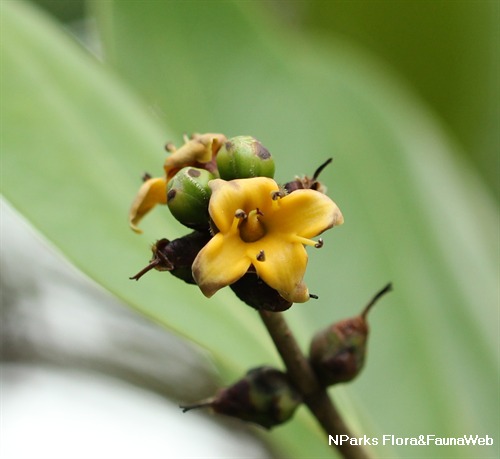
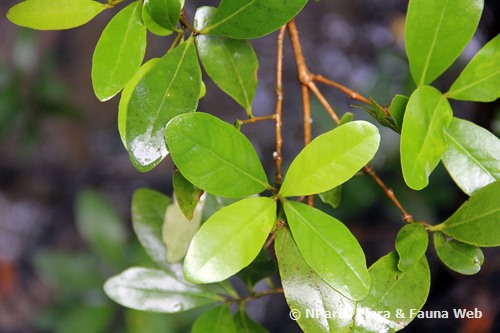
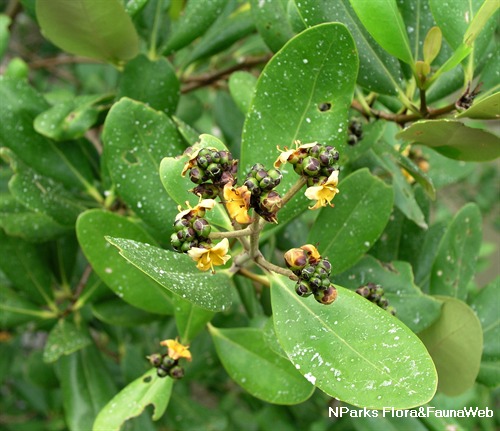
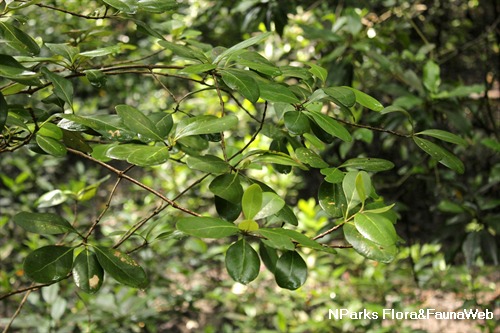
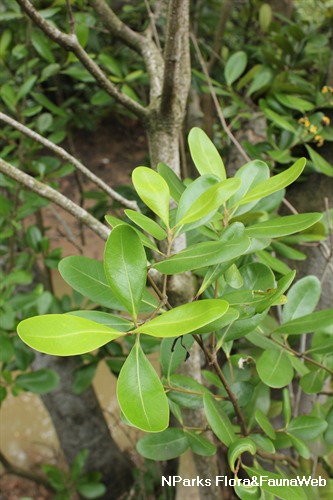
_lowres.jpg)
_lowres.jpg)
_lowres.jpg)
_lowres.jpg)
_lowres.jpg)
_lowres.jpg)
_lowres.jpg)


